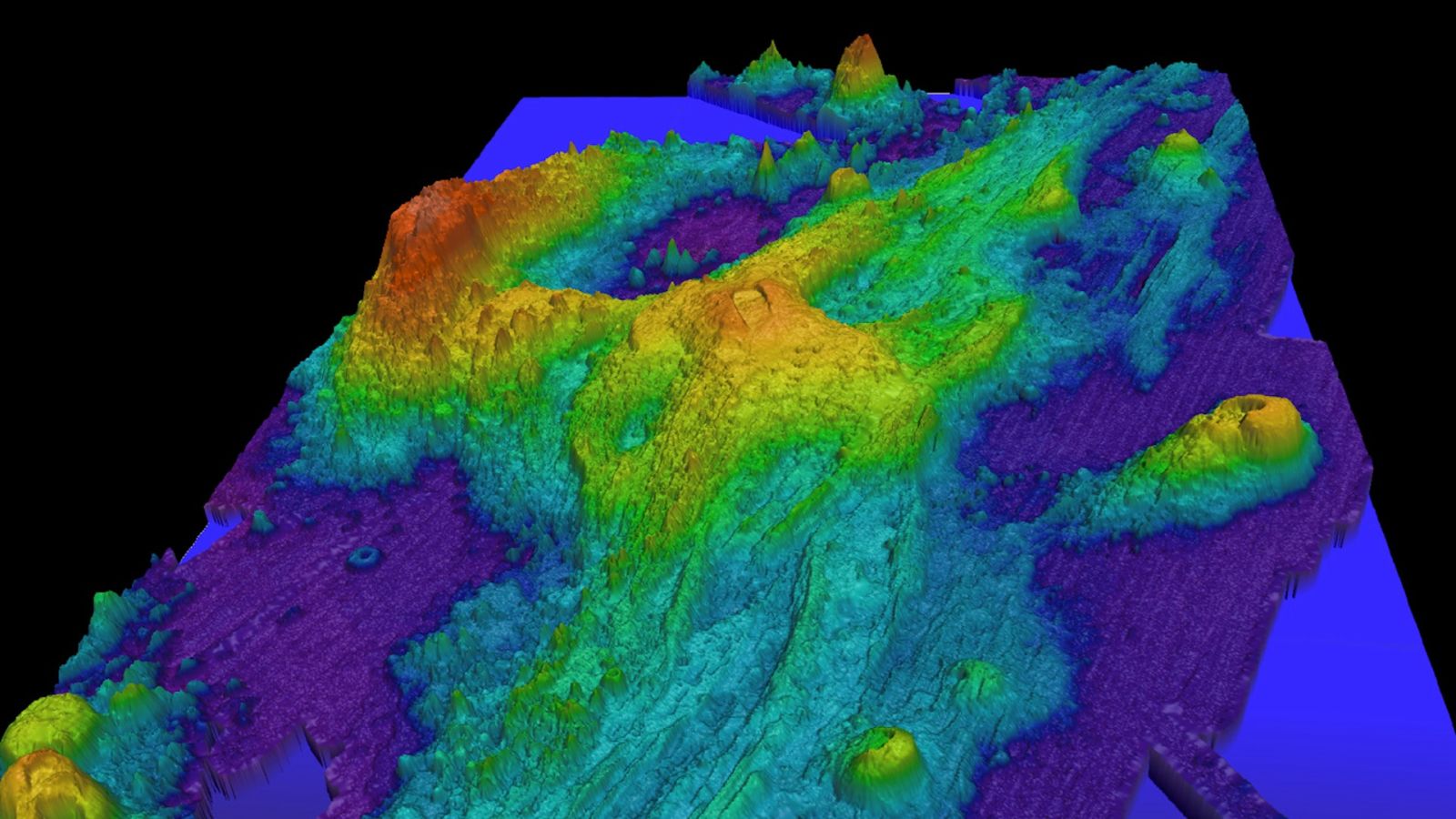This underwater volcano, close to the American coast, is expected to erupt in 2025 🌋
Follow us on Google News (click on ☆)
Axial is an underwater volcano that has experienced eruptions in 1998, 2011, and 2015. Due to its regular activity and relative proximity to land, it was chosen as the site for the world's first underwater volcanic observatory, the New Millennium Observatory. This observatory allows for real-time monitoring of the volcano's movements.

A bathymetric map of the Axial volcano.
Credit: NOAA
Scientists have observed that the surface of the Axial volcano is rising, a sign of moving magma that could indicate an impending eruption. William Chadwick, a geologist at Oregon State University, reported this inflation during the annual meeting of the American Geophysical Union in December 2024. The volcano's surface has reached 95% of its pre-2015 eruption level.
After a period of calm between 2015 and 2023, seismic activity resumed in the fall of 2023, with a notable increase in January 2024. The ground has been rising at a rate of about 10 inches (25 centimeters) per year, accompanied by hundreds of small earthquakes. Since then, the rate of inflation has stabilized.
William Chadwick and Scott Nooner, a geophysicist at the University of North Carolina at Wilmington, predict an eruption before the end of 2025. Their prediction is based on observations of magma movements and patterns of seismic activity. Axial, being well-monitored and posing no danger to populations, offers a unique opportunity to study the precursors of an eruption.
Volcanologists hope that these studies will lead to a better understanding of the warning signs of volcanic eruptions. Although long-term predictions remain challenging, Axial serves as an ideal case for developing forecasting models. Valerio Acocella, a volcanologist at Roma Tre University, emphasizes the importance of such cases in improving our understanding of volcanoes.
Research on Axial could thus contribute to significant advances in the prediction of volcanic eruptions worldwide. By studying magma movements and surface changes, scientists hope to refine their models for more accurate and long-term predictions.
Underwater volcanoes: major differences from land volcanoes
An underwater volcano is a mountain or hill formed by the accumulation of volcanic materials beneath the ocean's surface. These volcanoes can reach considerable sizes and are often located along mid-ocean ridges, subduction zones, or hotspots.
Unlike land volcanoes, underwater eruptions are less visible but can have significant impacts on marine ecosystems. Ejected materials can create new islands or alter the seafloor.
Underwater volcanoes play a crucial role in plate tectonics and the geochemical cycle of the oceans. They contribute to the formation of new seafloors and influence seawater chemistry through the input of minerals and gases.
Studying underwater volcanoes like Axial helps to better understand underwater geological processes and their implications for the planet. This research is essential for predicting eruptions and assessing risks to marine ecosystems.
How do scientists predict volcanic eruptions?
Predicting volcanic eruptions relies on observing several warning signs, such as earthquakes, ground deformations, and gas emissions. These indicators help detect magma movements beneath the surface.
Scientists use sophisticated monitoring instruments, such as seismometers, tiltmeters, and gas sensors, to track volcanic activity. These data are analyzed to identify recurring patterns and assess eruption risks.
However, long-term predictions remain challenging due to the complexity of volcanic systems. Volcanoes can change behavior unpredictably, making it difficult to anticipate eruptions.
Studies on well-monitored volcanoes like Axial offer unique opportunities to improve forecasting models. By better understanding internal processes, scientists hope to develop more reliable methods for predicting eruptions and minimizing risks to populations.